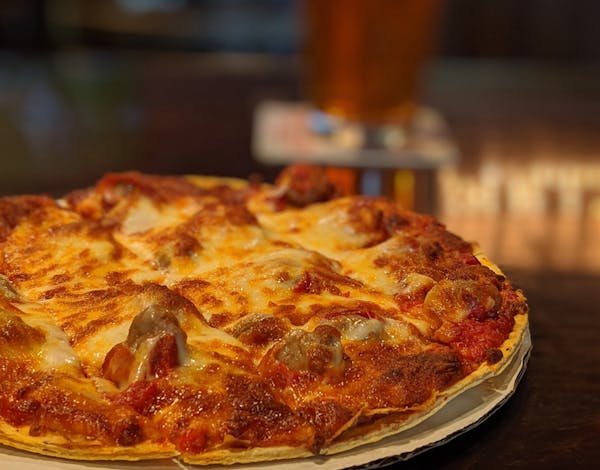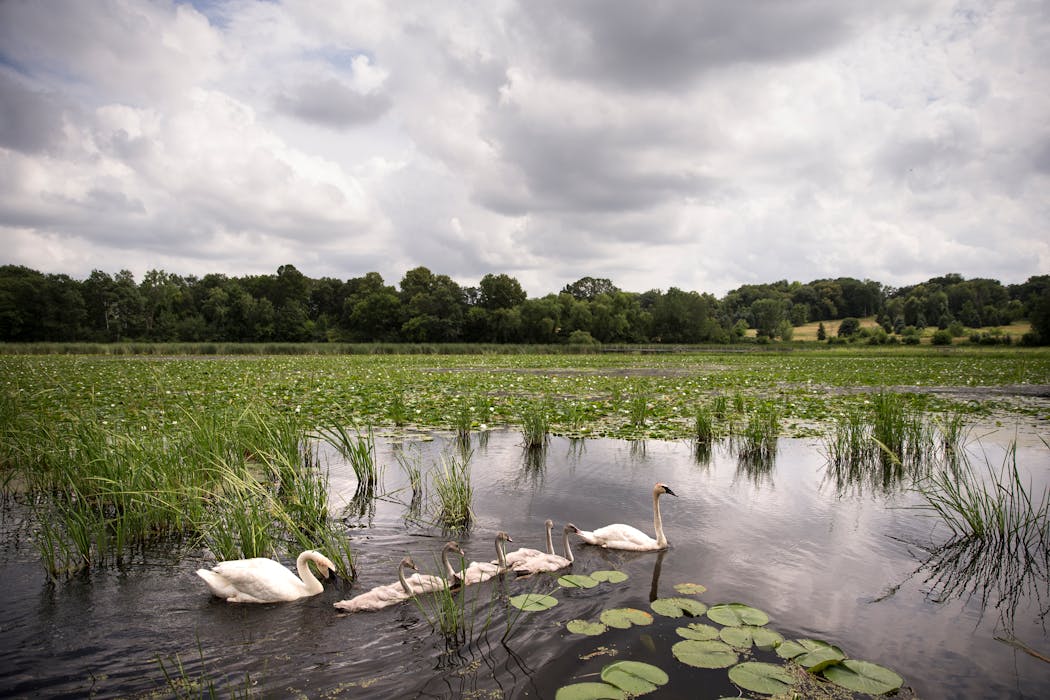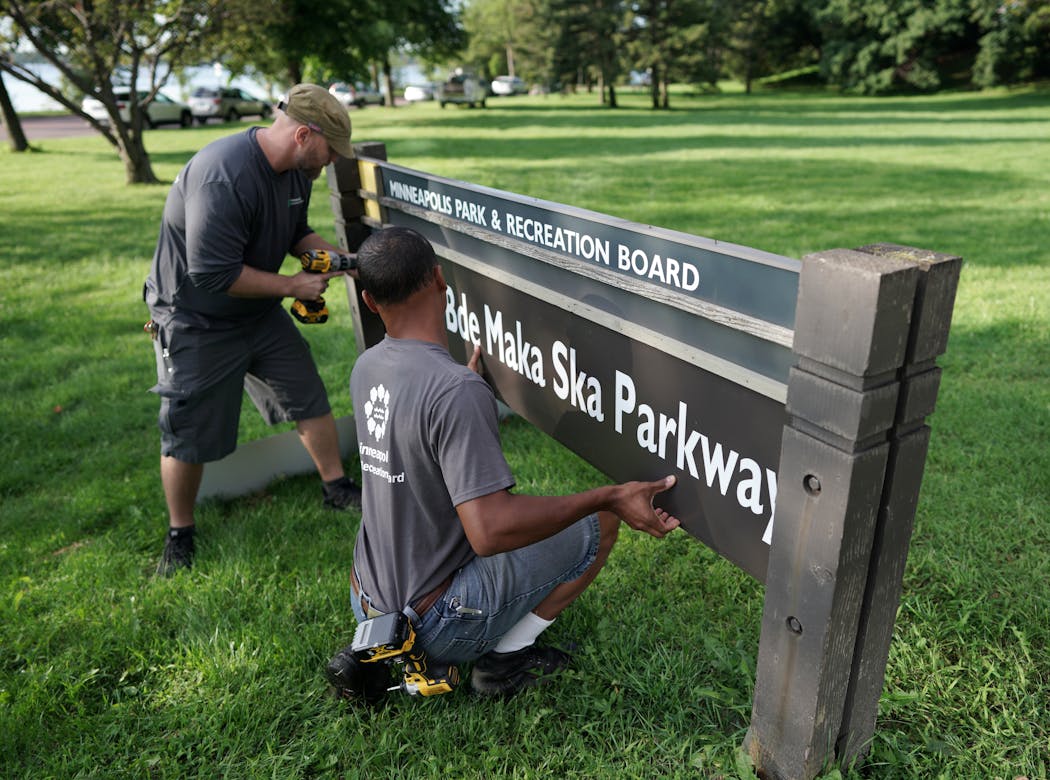How do Minnesota lakes get their names?
Listen and subscribe to our podcast: Via Apple Podcasts | Spotify | Stitcher
Note: This story contains place names that are racial slurs.
Reader Clayton Smith relishes noting the names of lakes that he encounters while navigating the Boundary Waters Canoe Area Wilderness every year.
"Lakes are such a huge part of who we are as a state," Smith said.
He's also noticed that some names are repeated, which made him wonder how lake names are determined. Smith contacted Curious Minnesota, the Star Tribune's reader-driven community reporting project, to get answers about who oversees lake naming in the state and how lakes are renamed.
As Smith observed, some lakes across the state share a name. The most common is "Mud." There are more than 200 Mud Lakes, according to the Minnesota Department of Natural Resources (DNR). There are also 113 Long Lakes, 83 Rice Lakes and 69 Bass Lakes.
Many of Minnesota's lake names predate any formal naming process. Surveyors in the 19th century crisscrossed the state documenting the existing names given to geographic features, which became their official names.
The DNR is now responsible for naming the state's geographic features, including lakes, under state law. The agency approves only a handful of lake name changes each year. The one approved change in 2022 renamed Redskin Lake to Memegwesi Lake in northeastern Minnesota.
How are lakes renamed?
The process of naming or renaming a lake in Minnesota begins at the county level. At least 15 registered voters must petition their county board of commissioners for a public hearing. County governments then consider the proposed change, gather public input and vote on it. Their decision is sent to the DNR for approval.
The DNR must check that the county follows the proper process. This includes ensuring the new name doesn't create confusion with similarly named features, or commemorate a living person. State and federal guidelines both discourage duplication of names to avoid confusion, said climatologist Pete Boulay, who handles naming requests for the DNR.
In one recent case, the DNR informed the Hennepin County Board that "Gold's Cove" would be an allowable name for a cove off Harrison Bay in Lake Minnetonka. The name is derived from a deceased couple "whose land was altered to create the cove," according to a staff report.
Following the DNR's approval, the new name is recorded by the county and published in the State Register, making it official in Minnesota. For federal use and final approval, the information is sent to the U.S. Board on Geographic Names.
The DNR typically records four to five lake name changes a year, though the COVID-19 pandemic slowed down the process a bit, Boulay said. Many are minor, such as the recent renamings of Paquet Lake to Poquet Lake in Cass County and Hornbean Lake to Hornbeam Lake in Dakota County.
Name changes are usually not controversial, Boulay said.
"Sometimes the name that exists right now is the controversial name, and people want to change it to something not controversial," he said.
There is a currently petition to change the name of Savage Lake in Ramsey County to Metis Lake, for example.
Some changes originate from the federal government.
Recently, the U.S. Board on Geographic Names renamed hundreds of lakes, streams, summits and other sites around the country to remove the word "Squaw," a derogatory term for Native American women. The action renamed one such lake in Pine County to Manidoons Zaaga'igan Zhaawanong.
Minnesota was one of the first states to prohibit geographic features named "Squaw" in the mid-1990s, prompting a slew of name changes. The state had no official name for the Pine County lake, however, despite its derogatory federally recognized name. The federal change will still need to go through the state's process to be official in the state.
How Bde Maka Ska was different
The most prominent recent lake renaming was the transition of Minneapolis' Lake Calhoun to Bde Maka Ska. Smith, the reader, asked why it was so difficult to change that name.
The short answer is that renaming this prominent local landmark resulted in a legal wrangle that went all the way to the Minnesota Supreme Court.
Federal surveyors named the lake after Secretary of War John C. Calhoun in the 1820s. Calhoun, who later became vice president, was an ardent supporter of slavery and the removal of American Indian people.
To the Dakota people, Bde Maka Ska — meaning "White Earth Lake" — was more than a body of water. It was once the site of an important Dakota village, and one of the first places where the language was documented and put into written form. The Dakota fished and harvested food and medicines there, and called it home for many decades before the first missionaries or government agents came to the area.
The effort to expunge Calhoun's name from the lake carried a bigger meaning, said Kate Beane, executive director of St. Paul's Minnesota Museum of American Art, a scholar of American Indian studies and one of the leading advocates for changing the lake's name.
"It was about our children and grandchildren, feeling welcome at that lake, and knowing that they mattered," said Beane, a descendant of village leader Cloud Man.
After years of debate, the Minneapolis Park Board in 2015 added Bde Maka Ska to its Lake Calhoun signs and began to educate the public about the lake's Dakota history. But the signs were not enough, Beane said.
Two years later, the Park Board reconsidered its decision and changed the name of the lake to Bde Maka Ska. The new name became official after winning approval from the Hennepin County Board, the DNR and the U.S. Board on Geographic Names.
That decision was contested by a group of homeowners, citing a law barring the state from changing lake names after 40 years. The state Court of Appeals in 2018 sided with the group, ruling that the DNR lacked authority to rename the lake.
But in 2021, the Minnesota Supreme Court overturned the appellate court ruling and upheld the Park Board's decision to scrap Calhoun's name from the lake and replace it with the Dakota name.
"For the Dakota people, it's always going to be Bde Maka Ska," Beane said.
The Bde Maka Ska debate has also changed how the DNR handles its renaming process. The agency now takes a more hands-on approach to renaming lakes, especially on researching the history of proposed names.
If you'd like to submit a Curious Minnesota question, fill out the form below:
Read more Curious Minnesota stories:
What Minnesotans want to know about their Land of 10,000 Lakes
How safe is it, really, to walk on the iced over lakes in Minnesota?
Why does Minnesota have so many lakes?
Is Minnesota's tiny Lake Itasca the true source of the Mississippi River?
After Lake Calhoun, what about other place names with racist roots?
What's the story behind the names of Pilot Knob, Johnny Cake and Yankee Doodle roads?





